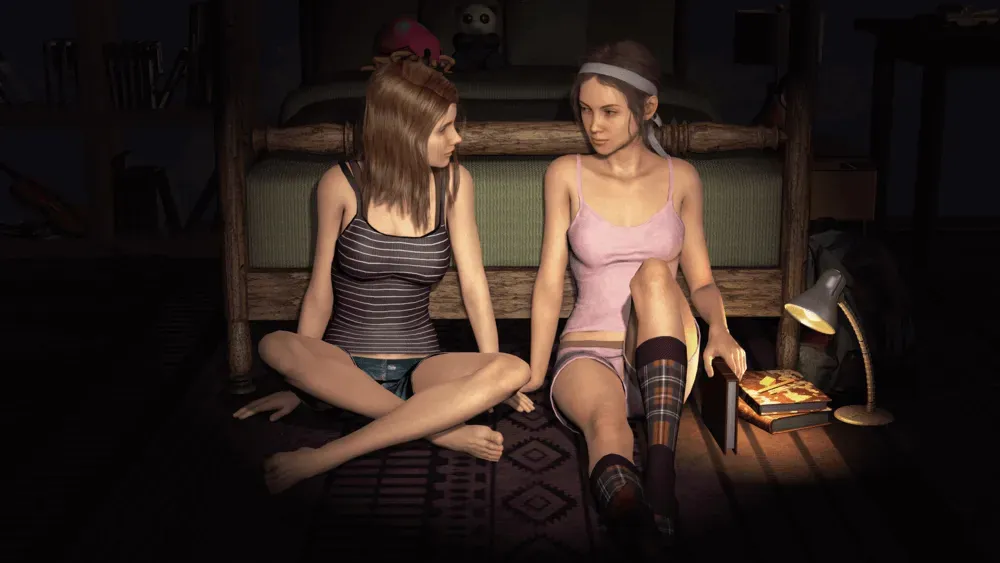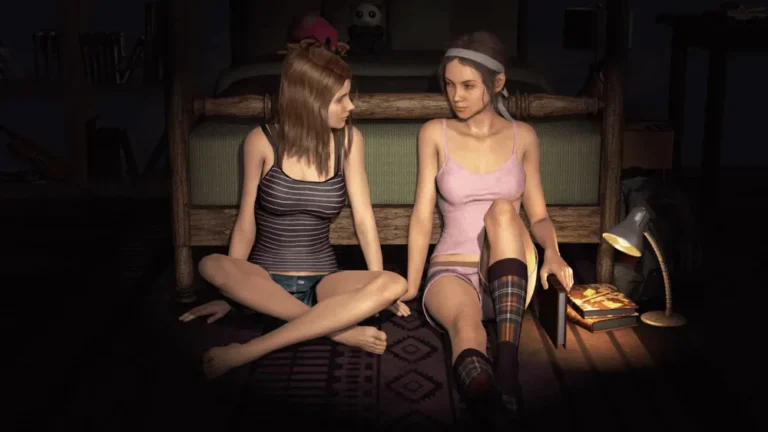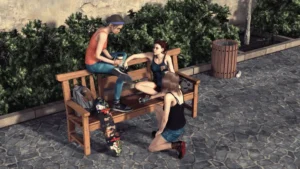
Short Sad Stories
Play Short Sad Stories
Short Sad Stories review
Exploring the narrative, gameplay, and emotional impact of Short Sad Stories
Short Sad Stories is a captivating visual novel that immerses players in a poignant narrative centered on Alice, a dreamy girl caught between reality and fantasy. This game uniquely blends emotional storytelling with player-driven choices, allowing users to navigate complex relationships and dramatic life events. In this article, we explore the core aspects of Short Sad Stories, including its plot, gameplay, and the emotional depth that sets it apart from other visual novels.
Understanding the Narrative and Characters of Short Sad Stories
Have you ever played a game that stuck with you long after you closed it? 😔 That was my exact experience with the Short Sad Stories game story. It’s more than just a game; it’s an emotional journey that holds up a mirror to our own struggles with loss, hope, and the stories we tell ourselves to cope. The heart of this experience is the Alice character Short Sad Stories, a protagonist whose journey is as fragile and powerful as our own. This chapter is a deep dive into her world, the people in it, and the choices that make every playthrough uniquely heartbreaking.
### Who is Alice? Exploring the Protagonist’s Journey
At its core, the Short Sad Stories game story is about Alice. 🎀 She isn’t your typical heroic protagonist; she’s a young woman grappling with a profound, unnamed loss that has left her world muted and grey. We meet her in a state of emotional withdrawal, building intricate fantasy worlds in her sketchbook to escape a reality that is too painful to face.
Her journey isn’t about saving the world—it’s about saving herself. 😥 The brilliance of the Alice character Short Sad Stories is in her relatability. Her struggle isn’t with monsters, but with melancholy, memory, and the daunting task of moving forward. I remember one late-night play session where a small choice to have Alice revisit a childhood memory hit me incredibly hard. It felt less like I was playing a game and more like I was gently guiding a real person through a difficult moment in therapy.
Her development is the central pillar of this emotional storytelling game. You witness her slowly transition from a place of avoidance to one of cautious engagement. The game masterfully uses visual and auditory cues—a slowly returning color palette, a softening musical score—to mirror her internal state. It’s a subtle but powerful reminder that healing is not a loud event, but a quiet, gradual process.
### Key Characters and Their Roles in the Story
Alice doesn’t walk her path alone. The cast of Short Sad Stories characters each serves as a crucial touchstone, reflecting different aspects of her psyche and her past. They are the catalysts that either help her heal or, if you make certain choices, enable her retreat.
The most significant of these is Leo, her older brother. He represents the anchor to reality—the one who remembers what happened and is desperately trying to pull Alice back from the brink of her fantasies. Their interactions are often strained, filled with a history of shared pain and a love that feels helpless.
Then there’s Marina, an enigmatic artist Alice meets. 🎨 Marina lives entirely in the present, encouraging Alice to express her pain through art rather than escape into it. She symbolizes a potential future, a different way of being. Conversely, the character known only as “The Storyteller” exists within Alice’s fantasy world, a seductive figure who offers the comfort of permanent escape from her painful memories.
Understanding these roles is key to navigating the game’s branching storylines visual novel. Who you encourage Alice to spend time with directly shapes her perception of reality and fantasy.
| Character | Key Trait | Role in the Story |
|---|---|---|
| Alice | Creative, Withdrawn, Resilient | The protagonist navigating grief through fantasy. |
| Leo | Protective, Worried, Grounded | Her brother; represents reality and familial bonds. |
| Marina | Free-spirited, Inspiring, Present | A friend who represents healing through expression. |
| The Storyteller | Alluring, Escapist, Mysterious | A fantasy guide offering permanent escape from pain. |
### How Player Choices Shape the Narrative
This is where the magic of Short Sad Stories truly comes alive. The gameplay impact on story is immense and deeply personal. This isn’t a game where you just watch a story unfold; you actively mold it with every decision. The visual novel narrative choices you face are rarely about “good” or “evil.” Instead, they are delicate, nuanced decisions that feel incredibly real.
My Tip: Don’t rush your choices. Sit with them. The game’s pause is designed for you to really think about what Alice is feeling.
For example, early on, Leo will ask Alice to clean out an old storage box. 🗃️ You are given a choice:
* Help him.
* Make an excuse and retreat to your room.
This seems small, but it’s a pivotal moment. Choosing to help him can open a dialogue about a forgotten memory, strengthening their bond and pushing Alice toward confronting her past. Choosing to retreat reinforces her walls and strengthens her connection to the escapist fantasy world, making a different ending more likely.
Another powerful moment involves Marina inviting Alice to contribute to a community art project. Agreeing to participate is a huge step in Alice using her creativity as a tool for connection rather than isolation. This single choice can unlock entire new scenes and a ending where Alice finds a community.
The branching storylines visual novel structure means you will never see everything in one playthrough. I’ve played through three times, and each time I discovered new dialogues, scenes, and layers to the Short Sad Stories characters based on who I prioritized. One playthrough ended with Alice reconciling with her past, while another ended with her becoming lost in her own beautiful, but lonely, fantasy—a conclusion that was utterly heartbreaking but felt earned based on my choices.
This is the genius of its design. The gameplay impact on story forces you to be an active participant in Alice’s therapy. You are not just observing her resilience; you are either fostering it or hindering it. It makes the emotional payoff—whether sad or hopeful—feel like a direct result of your understanding and care. It’s a profound example of how interactive media can make us feel truly responsible for a character’s well-being, making the Short Sad Stories game story an unforgettable experience in emotional storytelling. 💖
Short Sad Stories offers a rich, emotionally charged experience that combines compelling narrative with meaningful player choices. Through Alice’s journey and the complex relationships she navigates, players engage with themes of hope, struggle, and personal transformation. Whether you are drawn to visual novels for their storytelling or interactive gameplay, this game provides a memorable and thought-provoking adventure. Dive into Short Sad Stories to explore its unique blend of drama and decision-making firsthand.









